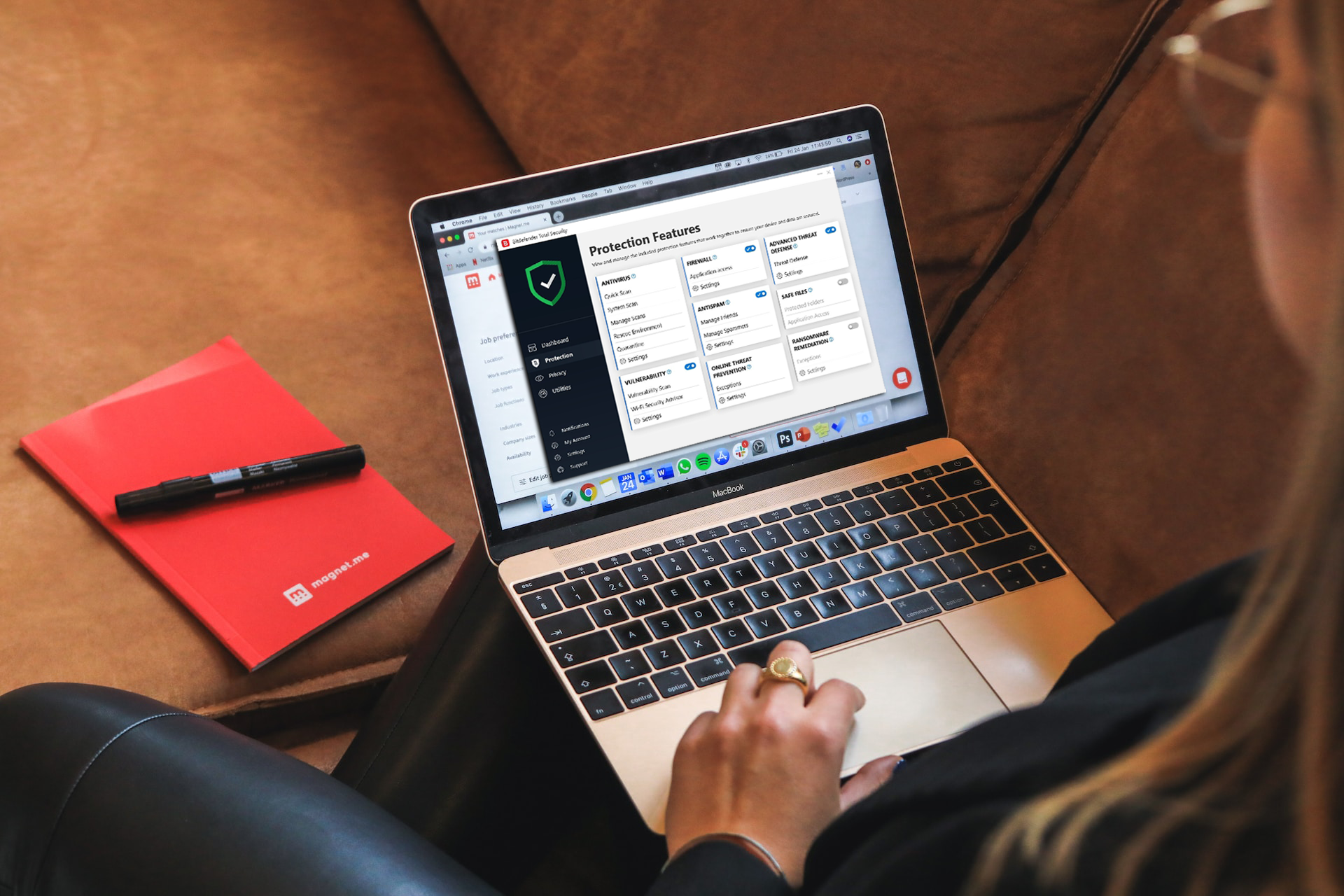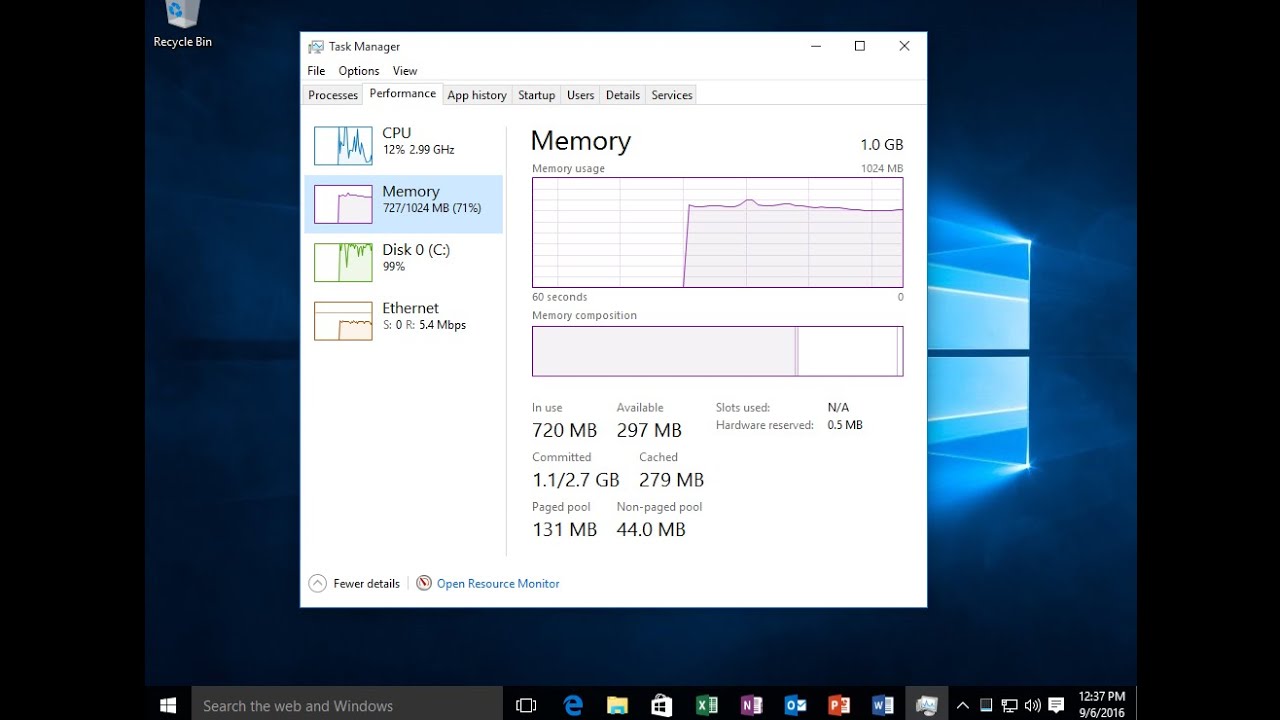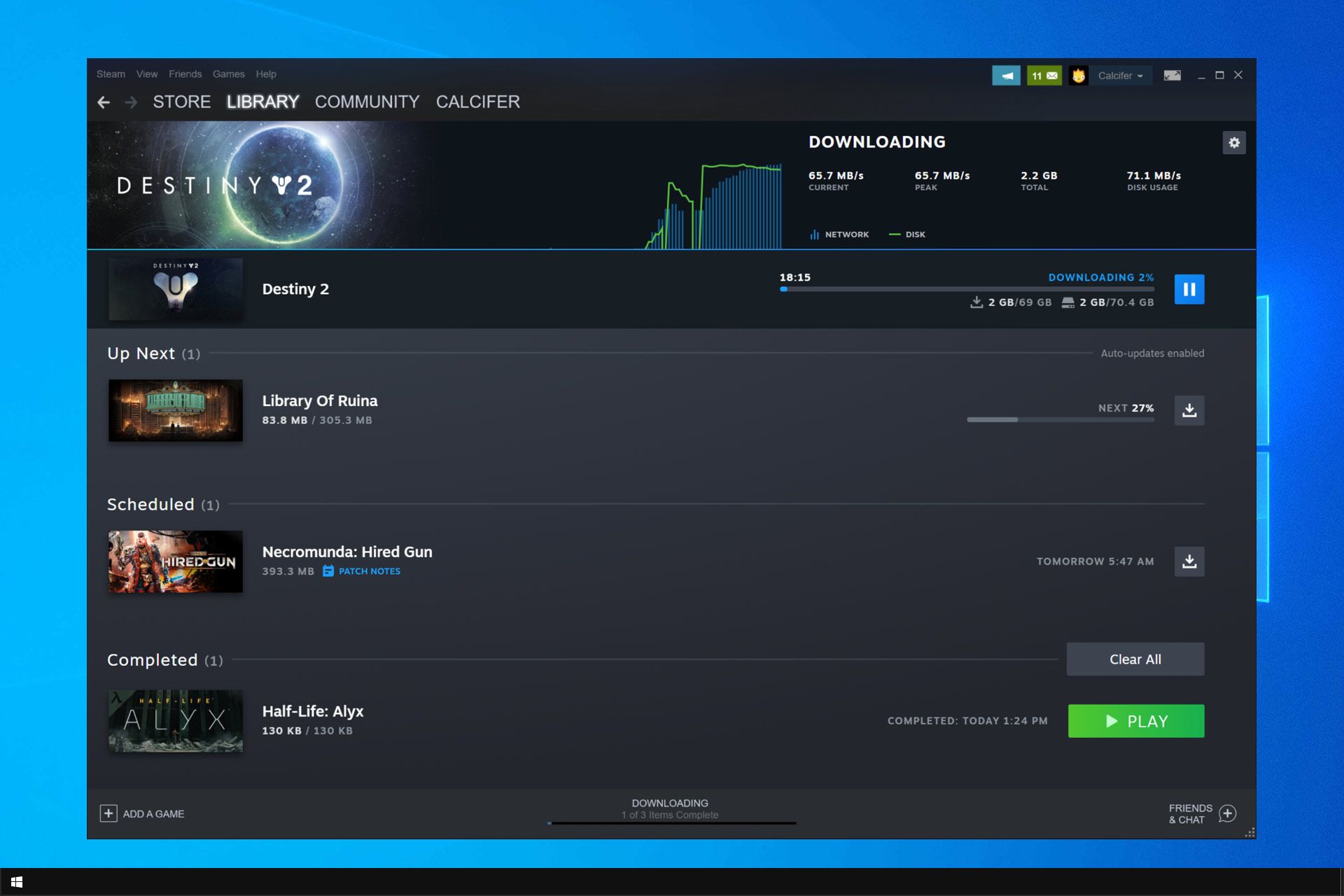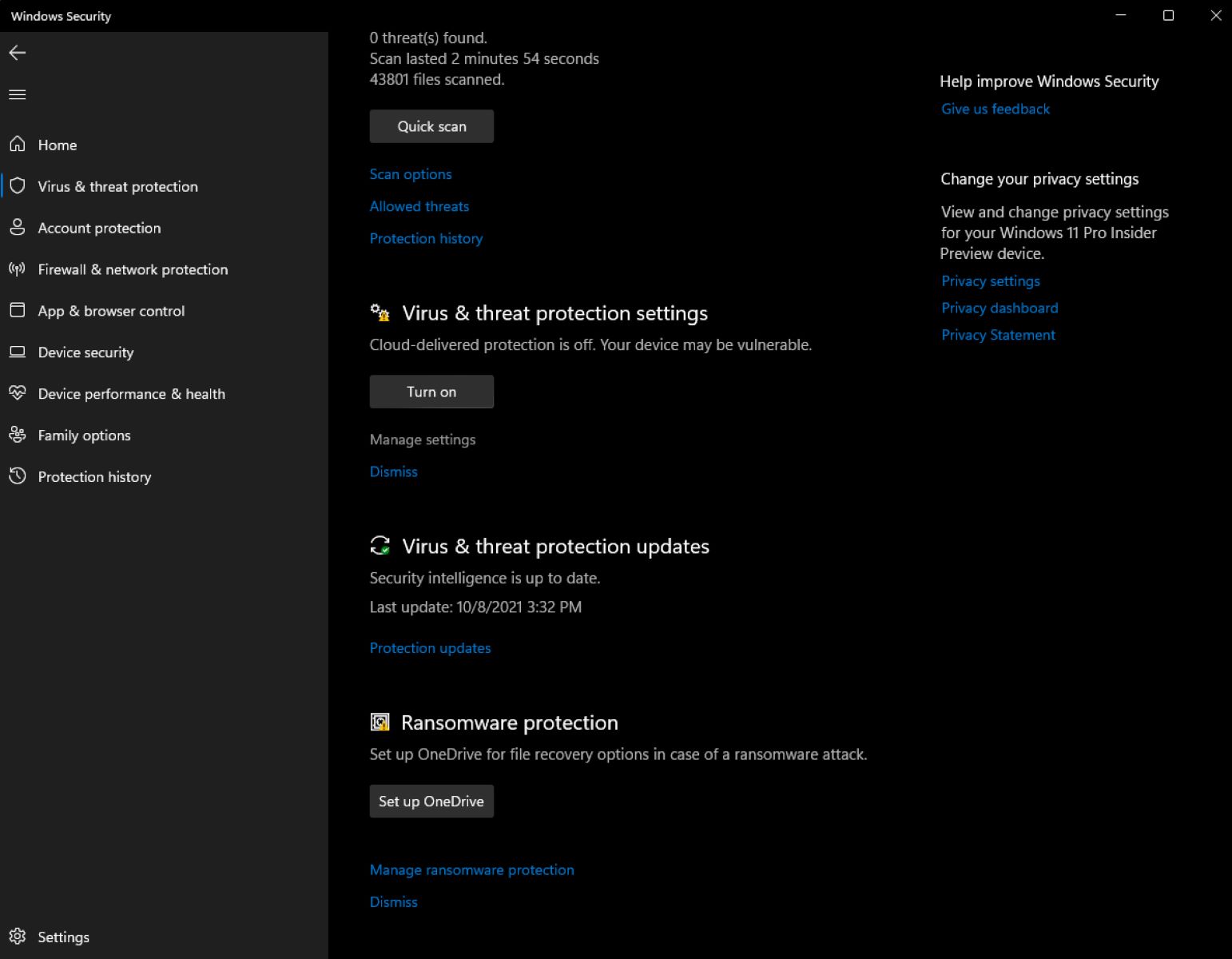Introduction
Antivirus software plays a crucial role in keeping our systems protected from threats and malware. It scans files, identifies and removes malicious programs, and provides real-time protection. However, there may be situations where you need to temporarily or permanently disable your antivirus software on your Mac. This could be for various reasons such as troubleshooting software conflicts, installing trusted applications, or performing system maintenance.
It is essential to understand that disabling your antivirus software temporarily or permanently should be done cautiously and only when necessary. By disabling the antivirus software, you are potentially leaving your system vulnerable to potential malware threats. Therefore, it is recommended to only disable your antivirus software if you are confident in the safety of the files and applications you are working with.
In this guide, we will walk you through the steps to temporarily disable or permanently disable the antivirus software on a Mac. Please note that the steps may vary depending on the specific antivirus software you are using. It is always advisable to refer to the documentation or support system of your antivirus provider for specific instructions.
Why you might want to disable your antivirus on Mac
While antivirus software is designed to protect your Mac from various security threats, there are a few scenarios where you may need to disable it temporarily or permanently. It is important to understand these reasons, as it will help you make an informed decision and take appropriate measures to safeguard your system.
One common reason to disable antivirus software on Mac is when you encounter compatibility issues. Some applications, especially those from lesser-known developers or older versions, may trigger false positive alerts and get blocked by antivirus software. Disabling the antivirus temporarily allows you to install or run the particular application without interruption.
Another reason to disable antivirus is when you need to troubleshoot software conflicts. Sometimes, antivirus software can conflict with other security software or system utilities, resulting in performance issues or unexpected behavior. By disabling the antivirus temporarily, you can isolate the issue and determine if it is caused by incompatible software.
Occasionally, you may want to disable the antivirus on your Mac to perform system maintenance or optimize performance. While antivirus software is an essential component of maintaining system security, it can also consume system resources. Disabling the antivirus temporarily during maintenance tasks like running disk cleanup, optimizing storage, or updating system software can help improve overall system performance.
Additionally, you may face situations where you need to disable the antivirus to install certain trusted applications. While rare, some legitimate applications may be flagged as potentially harmful by antivirus software due to their behavior or code structure. Disabling the antivirus temporarily allows you to install these applications without interference.
However, it is crucial to remember that disabling your antivirus software should only be done when necessary and for valid reasons. When the antivirus software is disabled, your Mac becomes vulnerable to potential malware threats. Therefore, always exercise caution, ensure you are downloading files from trusted sources, and re-enable your antivirus protection as soon as the task requiring its disablement is complete.
How to temporarily disable antivirus on Mac
Disabling your antivirus software temporarily on your Mac is relatively straightforward. Here are the steps to follow:
- Step 1: Open the antivirus software
- Step 2: Locate the preferences or settings
- Step 3: Disable real-time scanning or protection
- Step 4: Confirm and save changes
Locate the antivirus software icon in your menu bar or applications folder and open it.
In the antivirus software interface, look for the preferences, settings, or options menu. It is usually located in the menu bar or under a drop-down menu.
Within the preferences or settings menu, find the option to disable real-time scanning or protection. This setting may be labeled as “Real-Time Protection,” “Active Protection,” or something similar.
Once you have located the option to disable real-time scanning, click on it to toggle it off. Some antivirus software may require you to confirm your action or enter your administrator password. Make sure to save your changes by clicking on the “Save” or “Apply” button.
After following these steps, your antivirus software’s real-time scanning or protection will be temporarily disabled. Remember that this state leaves your Mac temporarily vulnerable to potential malware threats, so exercise caution and only disable the antivirus when necessary.
Step 1: Open the antivirus software
To begin the process of temporarily disabling the antivirus software on your Mac, you will first need to locate the antivirus software icon and open it. Here’s how you can do it:
1. Look for the antivirus software icon in your menu bar. It is often represented by a shield or a similar symbol. If you don’t see the icon in the menu bar, proceed to the next step.
2. If the antivirus software icon is not visible in the menu bar, go to your Applications folder. You can access the Applications folder by clicking on the Finder icon in your Dock and selecting “Applications” from the sidebar. Alternatively, you can press Command + Shift + A on your keyboard to open the Applications folder.
3. Once you are in the Applications folder, locate the antivirus software. Look for the name or logo of the antivirus software you are using. It may be listed as a standalone application or part of a larger security suite.
4. Double-click on the antivirus software icon to open it. The antivirus software interface should now be visible on your screen.
By following these steps, you should be able to open the antivirus software on your Mac. Keep in mind that the specific location and appearance of the antivirus software may vary depending on the software you are using. If you are having trouble finding or opening the antivirus software, consult the software’s documentation or contact their support for assistance.
Step 2: Locate the preferences or settings
Once you have opened the antivirus software on your Mac, the next step in temporarily disabling it is to locate the preferences or settings. Here’s how you can do it:
- Look for the menu bar at the top of the antivirus software interface. It typically contains various options and drop-down menus.
- Click on the “Preferences” or “Settings” option. This option is usually located in one of the drop-down menus, such as the “File,” “Edit,” or “Tools” menu.
- If you cannot find the “Preferences” or “Settings” option in the menu bar, try right-clicking anywhere within the antivirus software interface. A context menu may appear, and you might find the preferences or settings option there.
- Alternatively, some antivirus software may have a dedicated icon or button within the interface to access the preferences or settings. Look for icons that resemble gears, sliders, or tools.
- Once you have located the preferences or settings option, click on it to access the settings menu.
By following these steps, you should be able to find and access the preferences or settings menu of your antivirus software. It’s important to note that the specific location and appearance of this option may vary depending on the antivirus software you are using. If you’re having trouble finding the preferences or settings, refer to the software’s documentation or contact their support for further guidance.
Step 3: Disable real-time scanning or protection
After locating the preferences or settings menu in your antivirus software, you can proceed to disable the real-time scanning or protection feature. Follow these steps:
- Within the preferences or settings menu, look for the option related to real-time scanning or real-time protection. This setting is responsible for continuously monitoring your system for potential threats in real-time.
- The labeling of this option may vary depending on the antivirus software you are using. Look for terms such as “Real-Time Protection,” “Active Protection,” or something similar.
- Once you have found the real-time scanning or protection option, click on it to access its settings.
- Toggle the real-time scanning or protection feature off. This can usually be done by clicking on a switch, checkbox, or radio button next to the option.
- Some antivirus software might require you to confirm your action or enter an administrator password to make changes. Follow the prompts or instructions provided.
By completing these steps, you will disable the real-time scanning or protection feature of the antivirus software on your Mac. It’s important to note that this disables the active monitoring of your system for potential threats, leaving your Mac temporarily vulnerable to malware. Therefore, exercise caution and only disable real-time scanning when necessary.
If you encounter any difficulties while attempting to disable real-time scanning or protection, refer to the antivirus software’s documentation or contact their support for further assistance.
Step 4: Confirm and save changes
Once you have disabled the real-time scanning or protection feature in your antivirus software, it’s important to confirm your changes and save the settings. Here’s how you can do it:
- Before proceeding, review the settings in the preferences or settings menu to ensure that the real-time scanning or protection feature is indeed turned off.
- Look for a “Save,” “Apply,” or “OK” button within the preferences or settings menu. This button is typically located at the bottom or side of the window.
- If you made any changes that require administrative privileges, such as entering an administrator password, confirm your action and provide the necessary credentials.
- Once you are satisfied with the changes and settings, click on the “Save,” “Apply,” or “OK” button to save the changes.
- It is advisable to double-check that the real-time scanning or protection feature is indeed disabled by reviewing the preferences or settings menu after saving the changes.
By following these steps and confirming the changes in the preferences or settings, you have successfully disabled the real-time scanning or protection feature in your antivirus software. However, please be aware that your Mac is now temporarily vulnerable to potential malware threats. It is crucial to exercise caution and enable the antivirus protection again as soon as your disabling task is complete.
If you encounter any issues or difficulties while confirming and saving the changes, refer to the antivirus software’s documentation or contact their support for further guidance.
How to permanently disable antivirus on Mac
If you have made the decision to permanently disable your antivirus software on your Mac, it is essential to proceed with caution. Disabling antivirus permanently means that your system will be unprotected against potential malware threats. Here are the steps to permanently disable antivirus on Mac:
- Step 1: Open the antivirus software
- Step 2: Locate the preferences or settings
- Step 3: Disable all protection features
- Step 4: Save changes and exit
- Step 5: Uninstall the antivirus software (optional)
Locate the antivirus software icon in your menu bar or applications folder and open it.
In the antivirus software interface, look for the preferences, settings, or options menu. It is usually located in the menu bar or under a drop-down menu.
Within the preferences or settings menu, find the options related to real-time protection, automatic scanning, and any other security features. Disable all of these protection features by toggling the switches or checkboxes off.
After disabling all the protection features, save the changes by clicking on the “Save” or “Apply” button in the preferences or settings menu. Once that is done, you can exit the antivirus software.
If you no longer wish to have the antivirus software on your Mac, you can choose to uninstall it. To do this, locate the antivirus software in your Applications folder, then drag it to the Trash. Empty the Trash to complete the uninstallation process. Keep in mind that once you uninstall the antivirus software, your Mac will be completely unprotected against potential threats.
Keep in mind that permanently disabling antivirus on your Mac leaves your system vulnerable to various security risks. It is crucial to exercise caution, ensure you download files from trusted sources, and utilize other security measures to protect your Mac from potential malware threats.
If you decide to permanently disable your antivirus software, it’s important to regularly monitor and update your system’s security, as well as utilize other security measures such as a reliable firewall, strong passwords, and practicing safe browsing habits.
Remember, permanently disabling antivirus software should only be done if you are confident in your ability to maintain your Mac’s security through other means or if you are using a trusted alternative security solution.
Step 1: Open the antivirus software
To permanently disable your antivirus software on your Mac, you will need to start by opening the antivirus program. Here’s how you can do it:
1. Look for the antivirus software icon in your menu bar. It is often represented by a shield or a similar symbol. If you don’t see the icon in the menu bar, you may need to locate the antivirus software in your Applications folder.
2. If the antivirus software icon is not visible in the menu bar, go to your Applications folder. You can access the Applications folder by clicking on the Finder icon in your Dock and selecting “Applications” from the sidebar. Alternatively, you can press Command + Shift + A on your keyboard to open the Applications folder.
3. Once you are in the Applications folder, locate the antivirus software. Look for the name or logo of the antivirus software you are using. It may be listed as a standalone application or part of a larger security suite.
4. Double-click on the antivirus software icon to open it. The antivirus software interface should now be visible on your screen.
By following these steps, you should be able to successfully open the antivirus software on your Mac. However, it is important to note that the specific location and appearance of the antivirus software may vary depending on the software you are using. If you are having trouble finding or opening the antivirus software, consult the software’s documentation or contact their support for assistance.
Step 2: Locate the preferences or settings
After opening the antivirus software on your Mac, the next step in permanently disabling it is to locate the preferences or settings. Here’s how you can do it:
- Once the antivirus software is open, look for the menu bar at the top of the program interface. This menu bar typically contains various options and drop-down menus.
- Click on the “Preferences” or “Settings” option in the menu bar. This option is usually located in one of the drop-down menus, such as the “Edit” or “Tools” menu.
- If you cannot find the “Preferences” or “Settings” option in the menu bar, try right-clicking anywhere within the antivirus software interface. A context menu may appear, and you might find the preferences or settings option there.
- Alternatively, some antivirus software may have a dedicated icon or button within the interface to access the preferences or settings. Look for icons that resemble gears, sliders, or tools.
- Once you have located the preferences or settings option, click on it to access the settings menu.
By following these steps, you should be able to find and access the preferences or settings menu of your antivirus software. However, it’s important to note that the specific location and appearance of this option may vary depending on the antivirus software you are using. If you’re having trouble finding the preferences or settings, refer to the software’s documentation or contact their support for further guidance.
Step 3: Disable all protection features
After locating the preferences or settings menu of your antivirus software, the next step in permanently disabling it is to disable all protection features. Follow these steps:
- Within the preferences or settings menu, look for the options related to real-time protection, automatic scanning, and any other security features.
- Review the available options and settings to identify the protection features that are currently enabled and active.
- To disable each protection feature, toggle the switches, checkboxes, or radio buttons associated with those features to the “Off” position.
- Some antivirus software may group protection features into different categories, such as scanning, firewall, or web protection. Make sure to disable all the features across these categories.
- Double-check that all the protection features are disabled by reviewing the preferences or settings menu. Ensure that there are no active or enabled features remaining.
By completing these steps, you will successfully disable all the protection features of your antivirus software. It is important to note that this action will leave your Mac permanently unprotected against potential malware threats. Therefore, only proceed with permanently disabling the antivirus software if you have alternative security measures in place or if you are using a trusted alternative security solution.
Remember, permanently disabling antivirus software requires careful consideration and should be done only if you fully understand the implications and are confident in your ability to maintain your Mac’s security through other means.
If you encounter any difficulties while disabling the protection features, refer to the antivirus software’s documentation or contact their support for further assistance.
Step 4: Uninstall the antivirus software (optional)
If you have decided to permanently disable your antivirus software on your Mac, you may also consider uninstalling it completely. Here are the steps to uninstall the antivirus software:
- Locate the antivirus software in your Applications folder. Open the Finder by clicking on the Finder icon in your Dock.
- Click on the “Applications” option in the sidebar to access your Applications folder. Alternatively, you can press Command + Shift + A on your keyboard.
- Scroll through the Applications folder and locate the antivirus software’s icon. It usually bears the name or logo of the antivirus software you are using.
- Drag and drop the antivirus software’s icon to the Trash bin on your Mac’s Dock. Alternatively, you can right-click on the icon and select “Move to Trash.”
- To complete the uninstallation process, empty the Trash bin. Right-click on the Trash bin icon on your Dock and select “Empty Trash.” Alternatively, you can click on the Finder menu at the top of the screen, select “Empty Trash,” and confirm the action.
By following these steps, you will uninstall the antivirus software from your Mac. It’s important to note that once you uninstall the antivirus software, your Mac will be completely unprotected against potential threats. Therefore, it is crucial to have alternative security measures in place or to install a trusted alternative security solution to ensure the ongoing protection of your device.
Keep in mind that the process of uninstallation may vary slightly depending on the antivirus software you are using. If you encounter any issues or difficulties while uninstalling the software, refer to the antivirus software’s documentation or contact their support for further guidance.
Conclusion
Disabling antivirus software on your Mac, whether temporarily or permanently, should be approached with caution and only done when necessary. While there may be valid reasons to disable or uninstall antivirus software, it’s essential to understand the potential risks and ensure that you have alternative security measures in place.
In this guide, we have provided step-by-step instructions on how to temporarily disable antivirus software on your Mac. By opening the antivirus software, locating the preferences or settings, disabling real-time scanning or protection, and confirming and saving the changes, you can temporarily turn off your antivirus software to address specific needs or resolve compatibility issues.
If you decide to permanently disable the antivirus software, we have outlined the steps to accomplish this as well. It is crucial to understand that permanently disabling antivirus software leaves your Mac permanently vulnerable to potential malware threats. Only proceed with permanently disabling the antivirus if you have alternative security measures in place or if you are using a trusted alternative security solution.
Additionally, we have provided instructions on how to uninstall the antivirus software from your Mac, should you choose to do so. Remember that once the antivirus software is uninstalled, your Mac will be without any antivirus protection, so it’s important to consider alternative security solutions for ongoing protection.
Overall, when making decisions regarding antivirus software on your Mac, it is important to prioritize your system’s security. Regularly update your software, exercise caution when downloading files and browsing the internet, and consider utilizing alternative security measures such as firewalls and safe browsing practices.
If you have any concerns or questions about disabling or uninstalling antivirus software on your Mac, it is always advisable to refer to the documentation or contact the support team of your antivirus software provider for specific guidance.

























